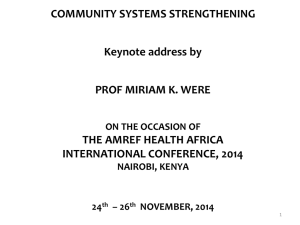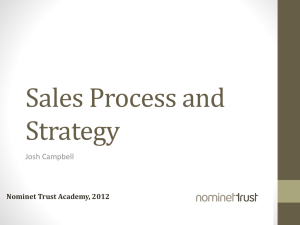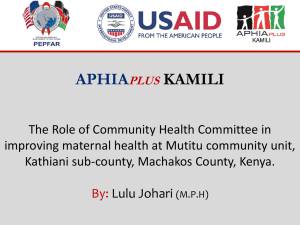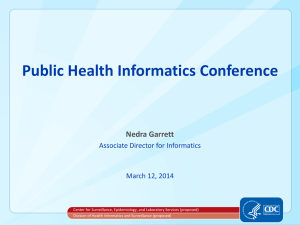Final assessment in
advertisement
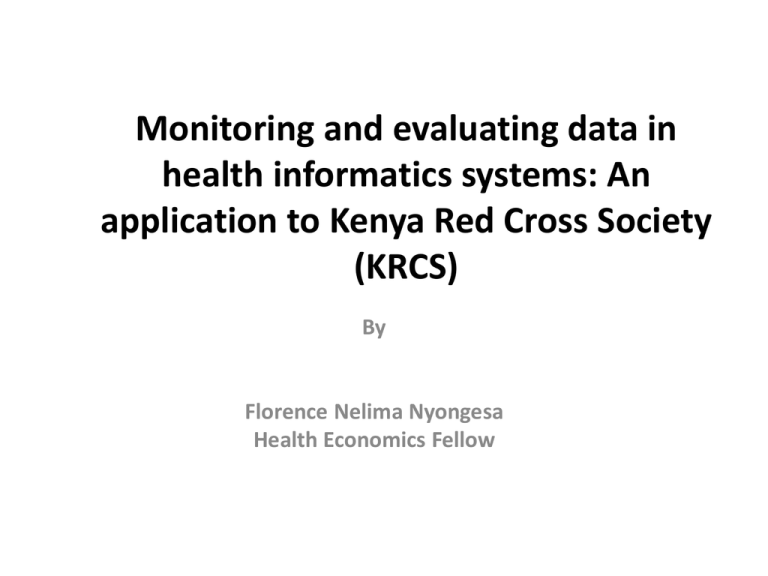
Monitoring and evaluating data in health informatics systems: An application to Kenya Red Cross Society (KRCS) By Florence Nelima Nyongesa Health Economics Fellow Introduction • A functional monitoring and evaluation (M&E) system is one of the cornerstones of a country’s response disease management and control. It provides the strategic information needed to make good decisions for managing and improving program performance, formulating policy and advocacy messages and planning programs better. It also generates data to satisfy accountability requirements Cont’ • Many institutions in Kenya, including the KRCS which run health related programs are equally faced with poor data coverage, treatment burdens are often estimated using rudimentary methods. Problem statement There is need to eliminate the barriers in health organizations that prevent project implementers in the organization from meeting data requirements for information sharing, transparency, and accountability. Objective The overall objective is determining ways of monitoring and evaluating data in health informatics system at KRCS. Literature • WHO (2006), “Monitoring and Evaluation of Maternal and Newborn Health and Services at the District Level”, • Methodology for Monitoring and Evaluation of Health Sector Reform in Latin America and the Caribbean (1998), • Monitoring and Evaluation Toolkit HIV, Tuberculosis and Malaria and Health Systems Strengthening (2009), Health Metrics Network. Statistics save lives: • Strengthening country health information systems. Geneva: Health Metrics Network; 2005 etc Activities and guidelines • Create order in design and implementation of data collection tools at baseline, midterm and end term. • Assess suitability for data collection tools in collecting adequate and correct data in line with research questions, objectives and hypothesis. • Create KRCS Health database for all records and documentation of work done by the society. • Tie academic and operational research ends and cater for the needs of academic funding, collaborations and donor funds (traditional way) Activities and guidelines cont’ • Set up an office with computers, data base and analysis softwares e.g SPSS, EP-Info, STATA and SASS and manage yearly licenses for the program. • Generate periodic summaries of statistical/ data outcomes based on the needs of the organization. • Quality data checks and innovation in data collection e.g recommend use of GPS, PDA and phones in data collection. • Linkage with other data software companies to access Epi-survey or the software Challenges • Implementing integrated data repositories • ensuring that data supports applications and administrative systems • data sharing • creating a single view of a beneficiary, provider, manufacturer, or citizen • and detecting and preventing to fight fraud, waste, and abuse Thank you




